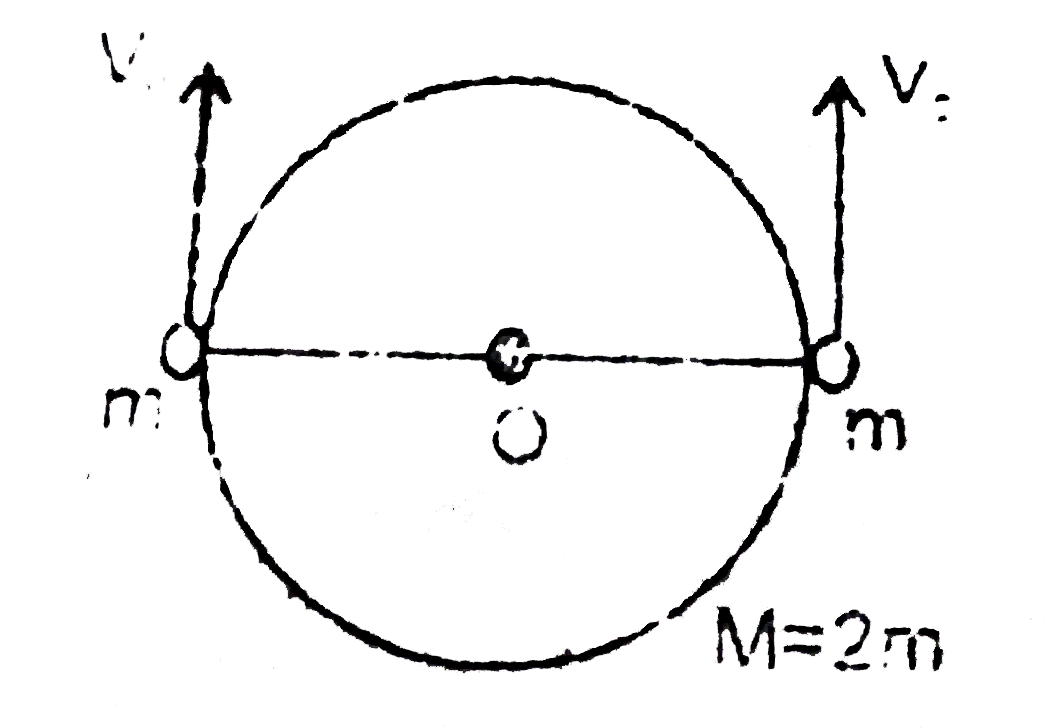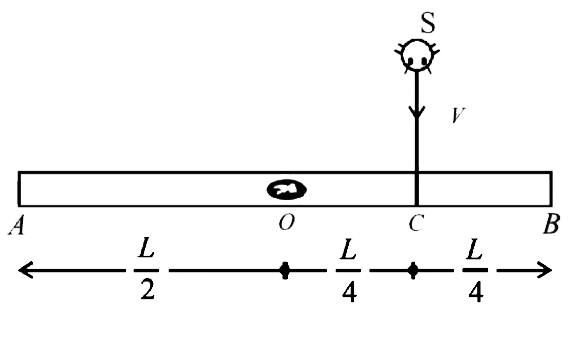[A] : A complete double circulation occurs in birds for the first time.
[R]: At no point is there any opportunity for oxygenated and unoxygenated blood to mix.
If both A and R are true and R is the correct explanation of A
If both A and R are true but R is not the correct explanation of A
If A is true and R is false
If both A and R are false
The correct Answer is:A
Step-by-Step Solution:
1. Understanding Double Circulation:
- Double circulation refers to the two separate circuits of blood flow in the body: one for oxygenation (pulmonary circulation) and one for delivering oxygen to the body (systemic circulation).
- In birds, this means that blood travels from the heart to the lungs to get oxygenated and then back to the heart before being pumped to the rest of the body.
2. Structure of the Bird's Heart:
- Birds possess a four-chambered heart, which includes two atria and two ventricles.
- This structure is crucial for maintaining separate pathways for oxygenated and deoxygenated blood.
3. Function of the Heart:
- The right side of the heart receives deoxygenated blood from the body and pumps it to the lungs for oxygenation.
- The left side of the heart receives oxygenated blood from the lungs and pumps it out to the body.
4. Prevention of Blood Mixing:
- The four chambers of the heart (two atria and two ventricles) are separated by valves.
- These valves ensure that oxygenated and deoxygenated blood do not mix at any point in the circulation process.
5. Conclusion:
- Therefore, the statement (A) is true as birds exhibit complete double circulation for the first time, and (R) is also true as there is no opportunity for oxygenated and deoxygenated blood to mix due to the structure of the heart.
- Double circulation refers to the two separate circuits of blood flow in the body: one for oxygenation (pulmonary circulation) and one for delivering oxygen to the body (systemic circulation).
- In birds, this means that blood travels from the heart to the lungs to get oxygenated and then back to the heart before being pumped to the rest of the body.
- Birds possess a four-chambered heart, which includes two atria and two ventricles.
- This structure is crucial for maintaining separate pathways for oxygenated and deoxygenated blood.
- The right side of the heart receives deoxygenated blood from the body and pumps it to the lungs for oxygenation.
- The left side of the heart receives oxygenated blood from the lungs and pumps it out to the body.
- The four chambers of the heart (two atria and two ventricles) are separated by valves.
- These valves ensure that oxygenated and deoxygenated blood do not mix at any point in the circulation process.
- Therefore, the statement (A) is true as birds exhibit complete double circulation for the first time, and (R) is also true as there is no opportunity for oxygenated and deoxygenated blood to mix due to the structure of the heart.
Topper's Solved these Questions
Similar Questions
Knowledge Check
Assertion : Double circulation is incomplete in amphibians and reptiles
Reason : Unlike in birds and mammals, in amphibian and reptiles, the left atrium receives oxygenated blood and right atrium receives deoxygenated blood.AIf both assertion and reason are true and reason is the correct explanation of assertionBIf both assertion and reason are true but reason is not the correct explanation of assertionCIf assertion is true but reason is falseDIf both assertion and reason are false
Assertion : In amphibians incomplete double circulation presents.
Reason : In amphibians oxygenated and deoxygenated blood get mixed up in the single ventricle which pumps out mixed blood.
View SolutionIdentify whether the given statements are true or false for double circulation.
I. It checks the mixing of oxygenated and deoxygenated blood.
II. It carries only oxygenated blood.
Choose the correct option accordingly.
View SolutionAn inverted cone of height H, and radius R is pointed at bottom. It is completely filled with a volatile liquid. If the rate of evaporation is directly proportional to the surface area of the liquid in contact with air (constant of proportionality k > 0). Find the time in which whole liquid evaporates.
View SolutionAn isolated smooth ring of mass M = 2m with two small beads each of mass m is as shown in the figure. Initially both the beads are at diametrically opposite points and have velocity v0 (for each) in same direction. The speed of the beads just before they collide for the first time is (complete system is placed on a smooth horizontal surface and assume each point of ring is touching the surface)

View SolutionThe rate law expresison is given for a typical reaction, n1A+n2B→P as r=k[A]n[B]n2. The reaction completes only in one step and A and B are present in the solution. If the reaction occurs in more than one step, then the rate law is expressed by consdering the slowest step, i.e., for SNl reaction r=k[RX]. If the eraction occurs in more than one step and the rates of the steps involved are comparable, then steady state approximation is conisdered, i.e., the rate of formation of intermediate is always equal to the rate of decompoistion of the intermediate. Conisder the reaction:
⎡⎢ ⎢⎣I2k2⇐⇒k12I(rapid equilibrium)H2+2Ik3−−→2HI(slow)⎤⎥ ⎥⎦
If we increase the concentration of I2 two times, then the rate of formation of HI will
View Solutionmark the true and false statements a. SAN generates as action potential which stimulates atrial systole.
b. ECG is an electrical representation of the graphical activity of the heart during a cardiac cycle.
c. The cardiac output of a normal man will be much lesser than an athlete.
d. The wall of right ventricle is much thicker than the left ventricle
e. In pisces the two separate circulatory pathways are present, hence they have double circulation.
f. The clsoed circulatory pattern is considered to be more advantageous than open circulatory pattern.
g. Glucose is absorbed by simple diffusion through lymph in lacteales present in the intestinal villi.
h. The SAN can generate the maximum number of action potential i.e. 140-150 min−1 in neonates, and is responsible for initiation and maintenance of the rhythmic contractile activity of the heart.
i. Angina can occur in any age but more common among the neonates and infants.
j. heart failure is sometimes called congestive heart failure because congestion of the blood vessels is one of the main symptoms of this disease.
View SolutionA thin uniform bar lies on a frictionless horizonta surface and is free to move in any way on th surface. Its mass is 0.16 kg and length √3meters. Two particless, each of mass 0.08 kg, are moving on the same surface and towards the bar in a direction perpendicular to the bar, one with a velocity of 10 m/s, and other with 6m/s as shown in fig. The first particle strikes the bar at point A and the other at point B. Points A and B are at a distane of 0.5m from the centre of the bar. The particles strike the bar at the same instant of time and stick to the bar on collision. Calculate the loss of the kinetic energy of the system in the above collision process.

View Solution
